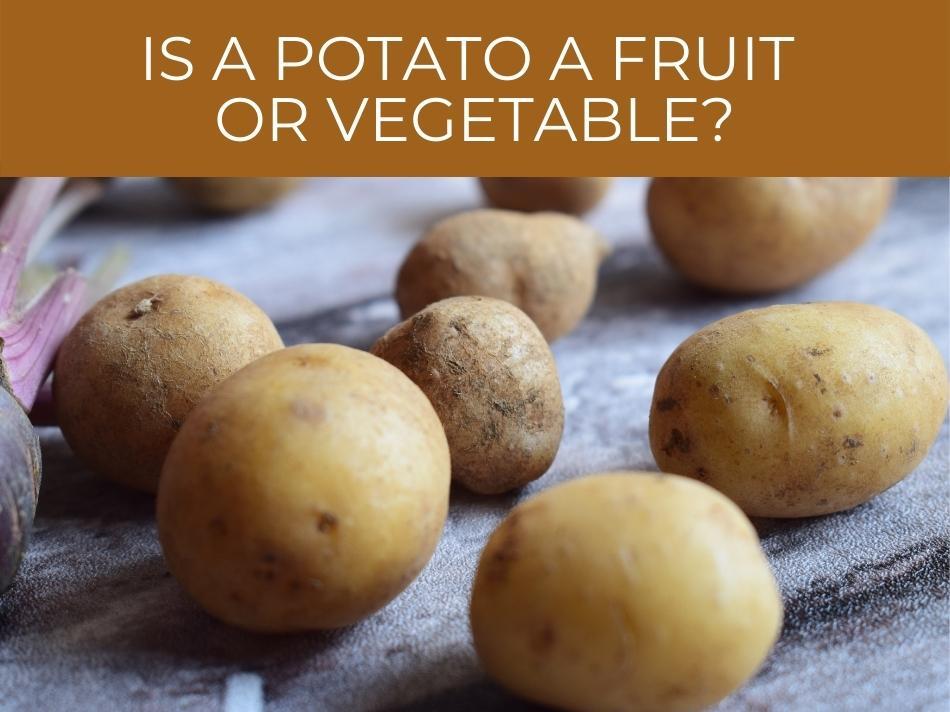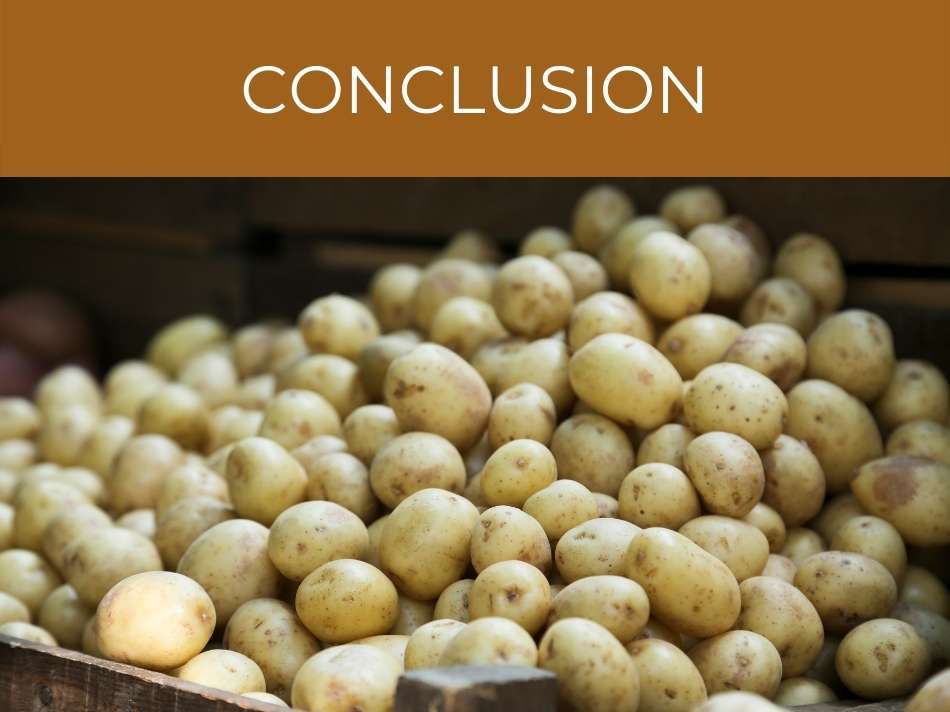If we want a healthy addition to a meal that features French fries, we usually choose a vegetable. So why do we regard potatoes as vegetables? On the other hand, it can so easily be the way they are prepared that makes them not quite as healthy as other vegetables may be.
A potato is a vegetable, since it is not the fruiting portion of the plant. Botanically, a fruit contains the seeds of a plant. Since potatoes are the swollen underground stem of the plant; as such, it cannot produce seeds, which are produced by flowers above ground.
Trying to work out the definitions of vegetable and fruit and seeing where the potato may fit in is quite exhausting. Read further to have all the points explained to you so that you will be sure of the answer to the question: Is a potato a fruit or a vegetable?

Is a potato a fruit or vegetable?
Technically, a potato is a vegetable since it’s part of the root of a plant. In dietary terms, if vegetables are the non-fruit parts of the plant, then a potato is a vegetable. Botanically, fruits grow from flowers and contain seeds.
Check out the complete guide for how to grow potatoes.

Is a potato a fruit?
The easiest explanation of a fruit is the swollen part of a plant that is above the ground, grows from the flower, and contains the seed, then a potato is not a fruit. Although the potato can sprout and grow on its own, it has nothing to do with the reproduction of a plant and cannot be classed as a fruit.
A potato grows under the ground and is actually the swollen lower part of the root.
This section of a plant is called a tuber.
Although the tuber is really the lower part of the stem, it is essentially a form of root and acts as a source of nutrients.
The nutrients in a tuber can go out into the roots but are mostly sent up into the plant to help it grow and flourish.
They also help the roots to grow which will anchor the plant.
Every plant is ‘wired’ to reproduce, via the production of seeds that leave the plant and are left to germinate elsewhere.

New plants grow from the seeds.
The fruit grows from the flower and is above the ground.
It is a swollen part of the plant that contains the seeds, which are fed by the fruit.
Because a potato grows below the ground and doesn’t contain the seeds, it is not a fruit.

Is a sweet potato a fruit?
A sweet potato is not a fruit. Just like the ordinary potato, a sweet potato is the swollen bottom part of the stem of the plant that is under the ground. A fruit is the swollen part of a plant above the ground that contains the seeds.
What we eat as a vegetable and is called a sweet potato is the underground section of the stem of the plant.

It is classified as a tuber, which is the section of a plant that stores energy and nutrients.
See how to grow sweet potatoes.
The fruit of a plant grows from the flower and is above the ground so that the seeds will be able to move away from the plant and reproduce.
The seeds of a plant are within the fruit and receive the nutrients to develop from the fruit.
When the fruit ripens, it falls from the tree and the seeds enter the soil and germinate and grow into new plants.
Because a sweet potato is below the ground and doesn’t contain the seeds, it isn’t a fruit.
See the full article on how to grow baby potatoes.
And, find out how much sunlight potatoes need to grow.

Fruit vs. vegetable
A fruit is the fleshy part of a plant in which the seeds grow; fruits develop from the flower of a plant. A vegetable is the edible part of a plant that does not contain the seeds: for example, stems, leaves, & roots.
A fruit is specifically to do with the reproduction of a plant.
Fruits develop directly from the flower.
Fruits also contain the seeds.
Many fruits are edible, but not all of them are tasty.
Some fruits are not edible and may even be poisonous.
Any other part of a plant that is edible is considered to be a vegetable.
There are five types of vegetables: dark green vegetables, beans and peas, starchy vegetables, red and orange vegetables, and other vegetables.
Dark green vegetables are also called cruciferous vegetables and include spinach, broccoli, and lettuce.
Beans and peas are quite self-explanatory and include kidney beans and sugar snap peas.
Starch vegetables are those that have more carbohydrates than other vegetables and include corn and potatoes.
Red and orange vegetables are literally vegetables of those colors and include red peppers and carrots.
All other vegetables include onions, celery, and eggplant.

Do potatoes have seeds?
What we know as the vegetable called a potato does not itself contain seeds. The potato plant does have flowers, and those flowers produce seeds. However, potatoes–which are swollen roots called tubers–do not have seeds.
All plants produce flowers, which produce seeds.
Seeds are the way a plant reproduces.
This means that a potato plant has seeds.
However, what we know as the vegetable called a ‘potato’ does not contain seeds itself.

Why do potatoes sprout?
Potatoes sprout when temperature & humidity are high, and after sufficient starches are converted to glucose. Keeping potatoes in cold, dry conditions (42 – 48F) delays sprouting. Potatoes sprout when the temperature is ideally 70F with high humidity.
The potatoes that we eat are the tuber of the potato plant.
A tuber is a thickened part of the stem of a plant that grows underground.
The tuber becomes part of the root system of the plant.
The role of a tuber is to send nutrients into certain sections of itself that produce shoots.
The shoots grow into roots that will support the plant.
Potatoes sprout because they are performing the role that they would if they were still part of the plant in the ground.

Where did potatoes originate?
Potatoes originated in South America. They were first cultivated a few thousand years BCE in the areas we now know as Peru and parts of Bolivia. Potatoes were brought by European colonists to Europe, and then spread to other parts of the world.
Potatoes are not preserved as well as some other materials over thousands of years.
The remains of a potato were verified as part of an archeological dig and dated at 8000 BCE.
Potatoes also feature in the design of some ceramic pottery in Peru.
This verifies that potatoes originated in South America.
They were first introduced to Europe in the late 16th century.
Potatoes were first introduced to America and the other colonies in the early 1600s.

Conclusion
Potatoes have been around for thousands of years. Surely this makes them royalty of some kind.
Are potatoes the viscounts of vegetables, or the first dukes of fruit?
Understanding the difference between fruit and vegetables helps us to understand why a potato is not a fruit but is a vegetable that we enjoy in some healthy dishes, and some that are not quite as healthy.
When it comes down to it, though, the potato is a vegetable that is here to stay.

